This is how you learn to wingsurf in the wave - set the pump and wing "off"
Frithjof Blaasch
· 17.06.2023
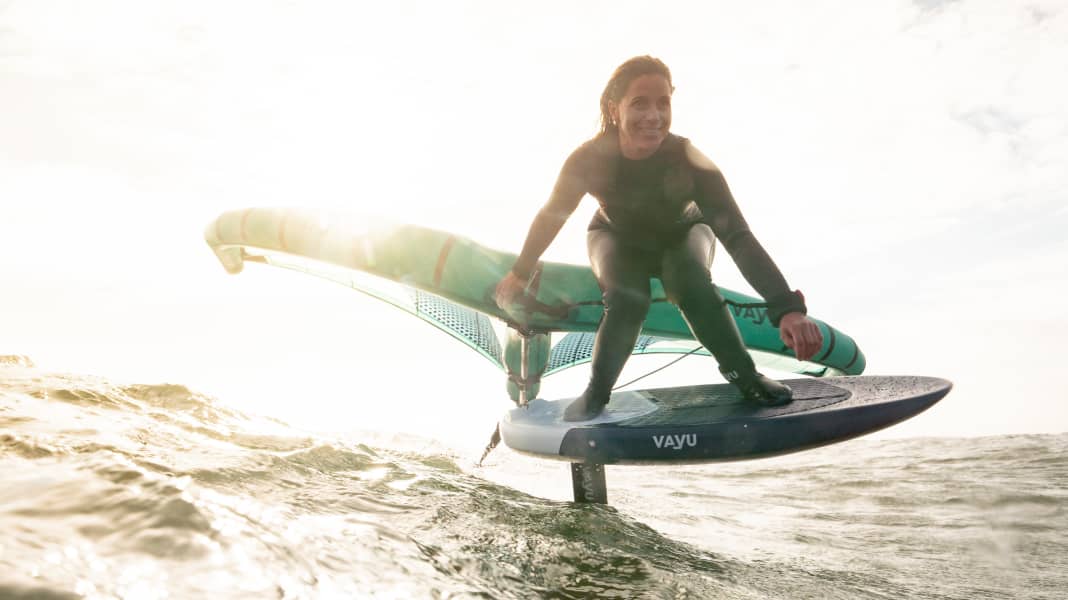
In the first three parts of our series, we have already introduced you to the basics of wing surfing in the wave. In order to surf waves like on a surfboard, the wing must be brought into the neutral position. Flying behind the wing is commonly referred to as the "off-position", or alternatively as "drifting" or "flagging" the wing.
Wingsurfing in the wave - repetition of the foot position
For wingsurfing in the wave, you should be able to control the board without pressure in the wing. If you decide to put the wing "off" when riding, you should stand on the board with your usual leg in front (regular/goofy). Depending on the wind direction, this can also mean that you ride the waves with your feet turned (switch stance) (Excursus on foot position: Part 3) . This gives you a better board feel in the absence of wind pressure and allows you to react better to the movements of the board.
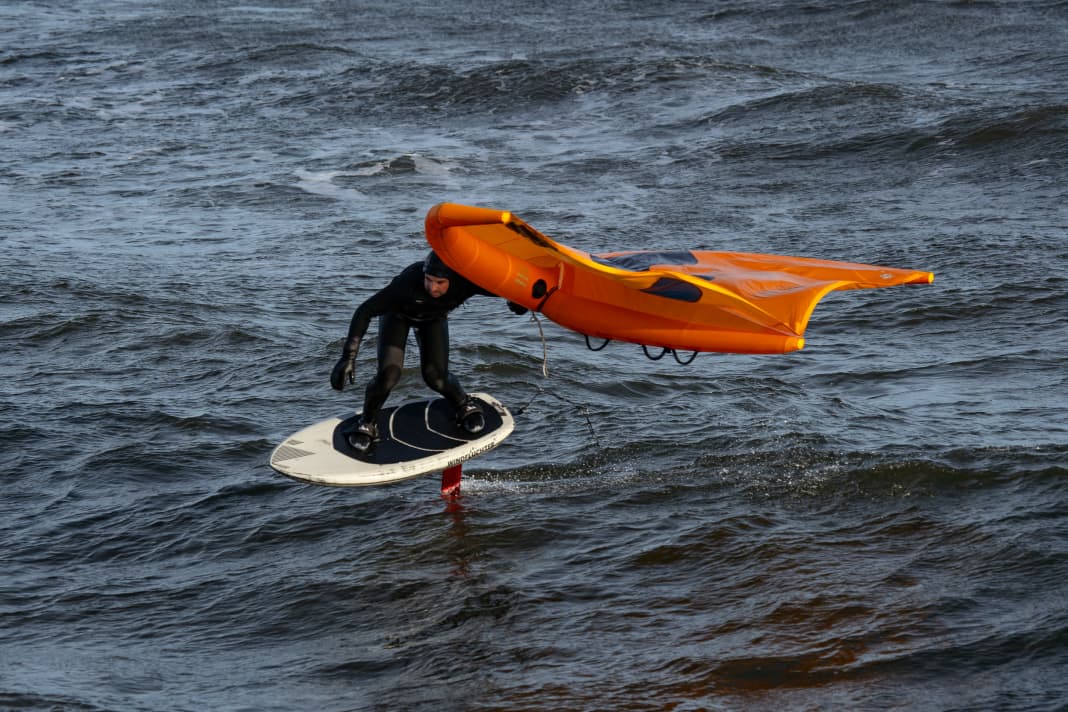


Handle change - set the wing "off
To take the wing out of the wind on the wave and pull it behind you, change your grip. It doesn't matter which position your feet are in on the board. Firstly, you need to make sure that the wave has enough thrust and is really pulling you along. To do this, release your back hand first, lower the wing to shoulder height and let it drift downwind. When you realise that the wave is producing enough thrust, grab the loop on the front tube crosswise with your free back hand.
The handle change is shown again in detail in the picture gallery:
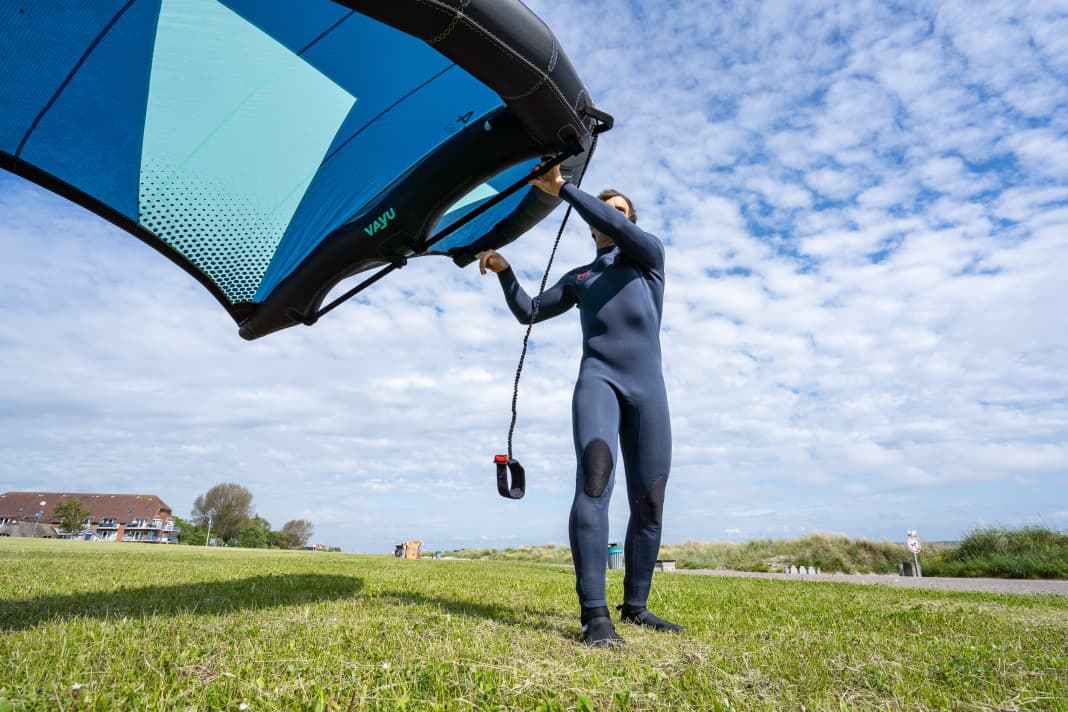





This cross grip should be performed smoothly, as quickly as possible and ideally "blind" - it's best to practise it on the beach. If you concentrate too much on the wing when gripping round, this always causes unrest in the wave ride and the board often starts to rise uncontrollably. You always have to push the nose of the board with your front leg towards the trough of the wave in order to stay on the wave and avoid being thrown off.
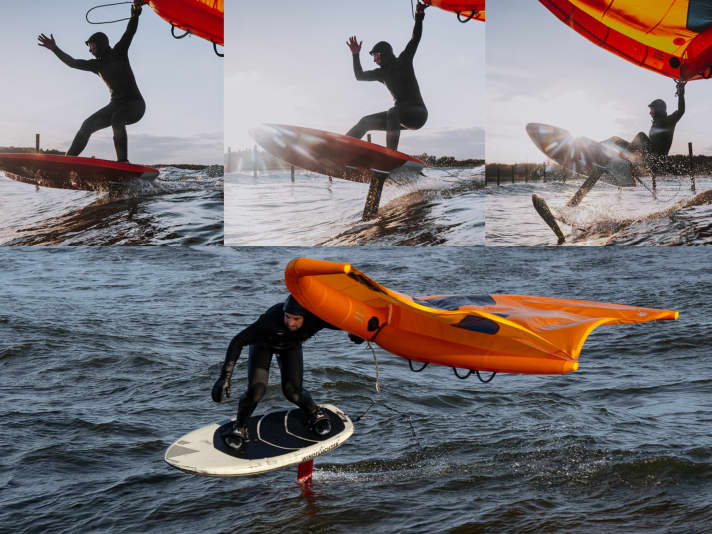
Pumps on the shaft
Especially with very small, powerless waves, it can happen that you have to bridge a section by pumping to get back up to speed. To do this, you have to ride at an angle to the wave (as when surfing) and build up speed again by moving the board up and down.






To begin with, you can finish off your first wave ride by slowly lowering the board back onto the water and only then grabbing the wing again. However, the aim should of course be to grab the wing again at the end of the wave ride before the board touches the water. To do this, the movement sequences must be internalised through repetition.
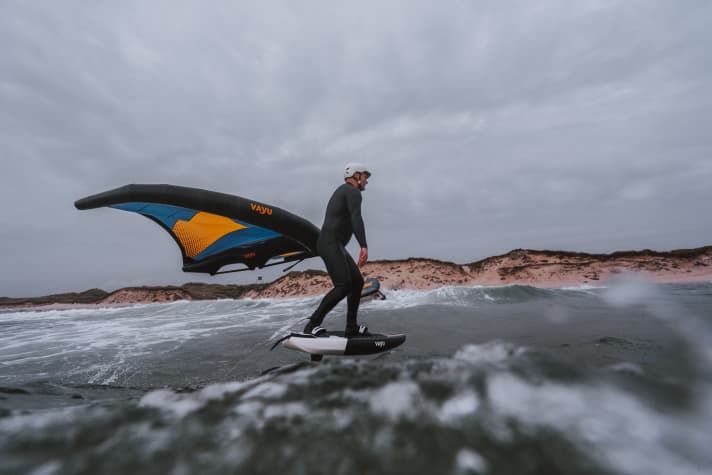
Here are a few final tips for wingsurfing in the wave:
- Always keep your upper body above the centre of the board so that the board does not tip sideways
- Keep your knees low so that you can vary your altitude more easily
- Don't look at the wing, but in the direction you want to go
- If the wing turns once when riding off so that the loops/boom are pointing upwards, stay calm and try to continue foiling. Sometimes the wing will turn back on its own, otherwise you will need to give it a little help with your hand
In the fifth part of our series, we show you how to ride your first turns.
You missed the first parts? Click here for the articles:
Wings in the wave part 1 (spot selection, launching and landing)
Wings in the wave part 2 (crossing waves)
Wings in the wave part 3 (board control)
